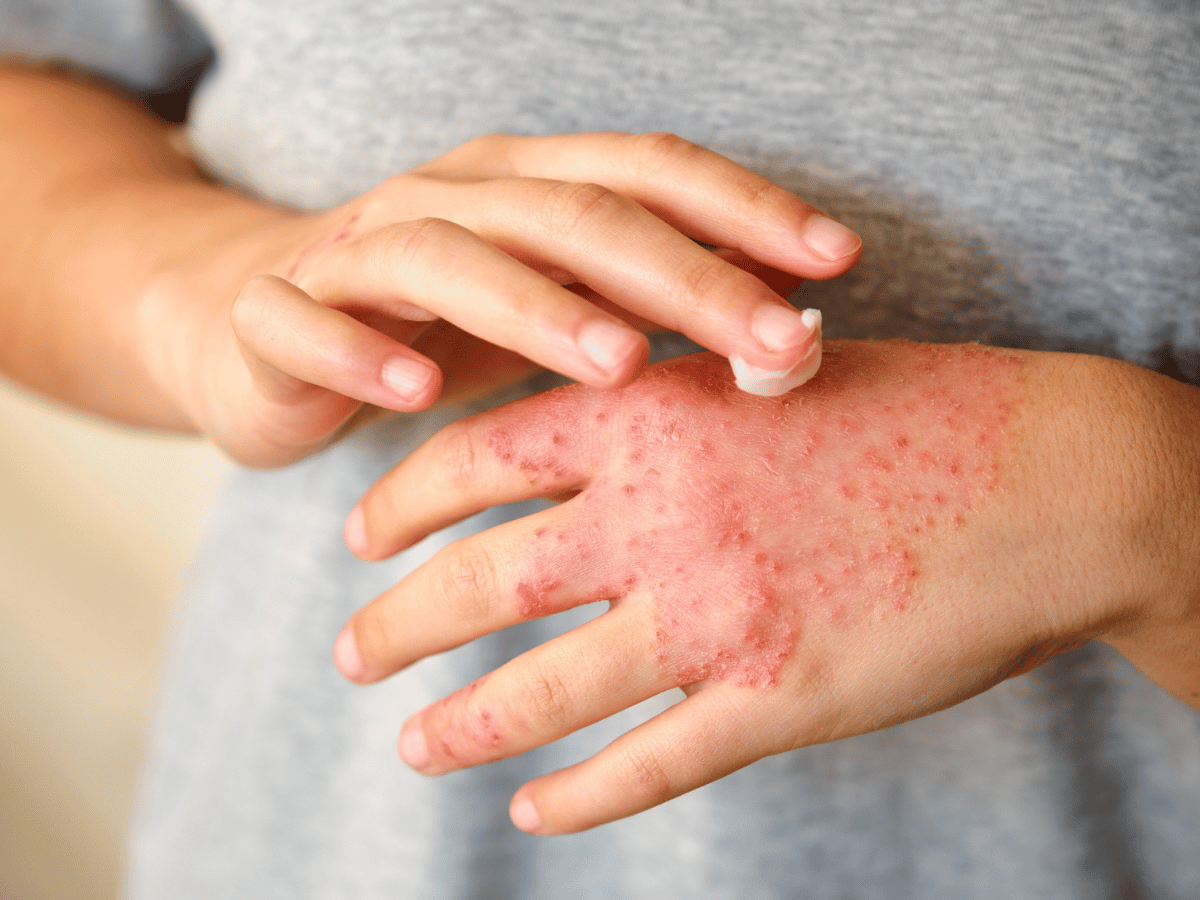What Is Atopic Dermatitis?
Atopic dermatitis is a rash that occurs in up to 20% of infants and 3% of the U.S. population as a whole. The rash presents usually as an itching dermatitis that can lead to intense burning and discomfort. With time, atopic dermatitis improves. However, approximately 60% of those who develop the disorder in childhood have some degree of eczema that occurs throughout their lifetime. Many patients with atopic dermatitis can also suffer from hay fever, asthma, and sinusitis.
RISK FACTORS
Approximately 60% of those who develop the disorder in childhood have some degree of eczema that occurs throughout their lifetime.
SYMPTOMS
When assessing atopic dermatitis it is important to determine whether or not one has a history of hay fever, pollen or dust allergies. The skin of those with atopic dermatitis is described as “dull or lusterless”. The rash often occurs behind the elbows or knees. In younger patients, dermatitis involves the scalp and the face. Patients often have increased line markings of the hands and crusting spots on the fingers.
FAQ
What Aggravates Atopic Dermatitis?
Direct manipulation of affected areas can promote secondary infection and aggravate the condition. It is important to avoid placing irritating substances on the skin, such as alcohol, propylene glycol, or lanolin based products. These agents can intensify the rash. The use of emollients and topical corticosteroid creams along with reducing water temperature can be useful in treating the disorder.
What Factors Can Aggravate Atopic Dermatitis?
Interestingly, there are certain food groups which can aggravate Atopic Dermatitis, especially in younger children. Food products containing milk, soy, eggs, fish, wheat or peanuts have been implicated. If one suspects a certain food intolerance, it is important to avoid such products for at least one to two weeks to see if the rash improves. Allergy testing is sometimes required.
What Environmental Factors Should Be Avoided?
Pillows, down comforters and mattresses that contain feathers can often make symptoms worse. It is important to consider the materials that contact the skin when assessing atopic dermatitis. Patch testing is also sometimes helpful. This type of testing can help us determine if certain chemicals or agents are responsible for rash development.
Are Allergy Shots Helpful?
Not usually. In fact, they sometimes cause the dermatitis to become more intense.
Our Locations
Visit Dermatology Institute
Our team provides thoughtful, expert care for all your skin health needs. We are proud to offer the most advanced general, surgical, and cosmetic dermatological services in the Newnan and LaGrange areas.

